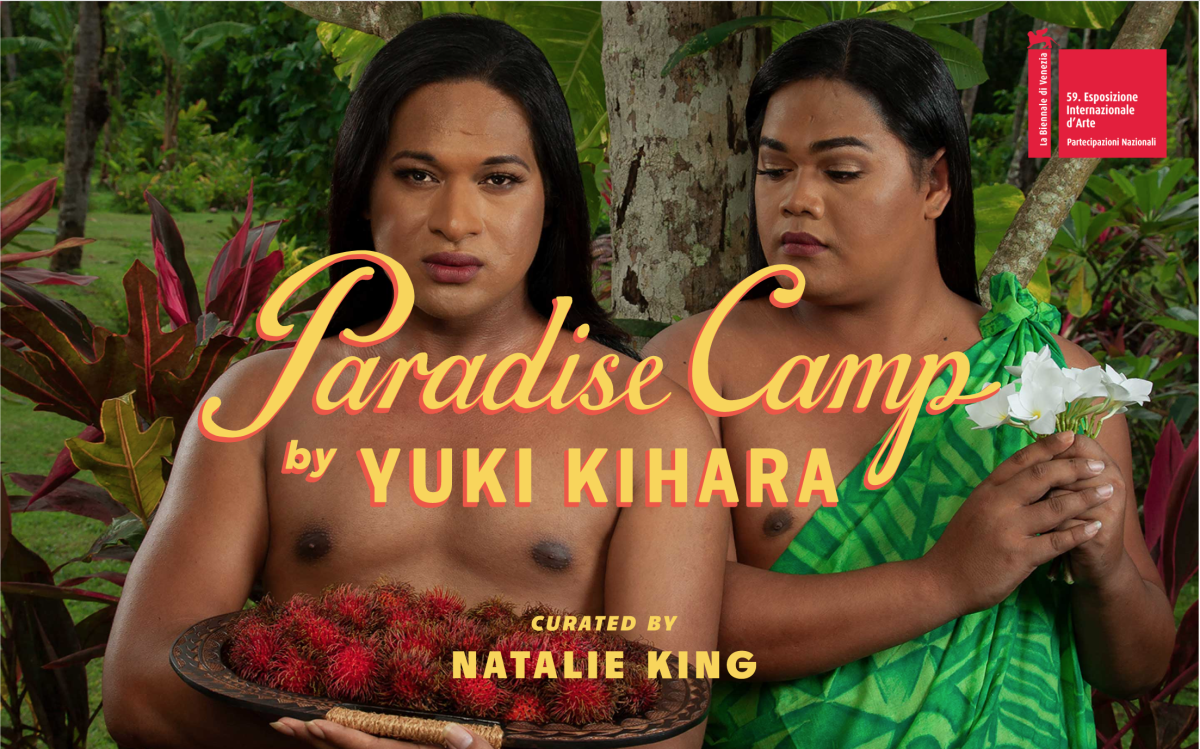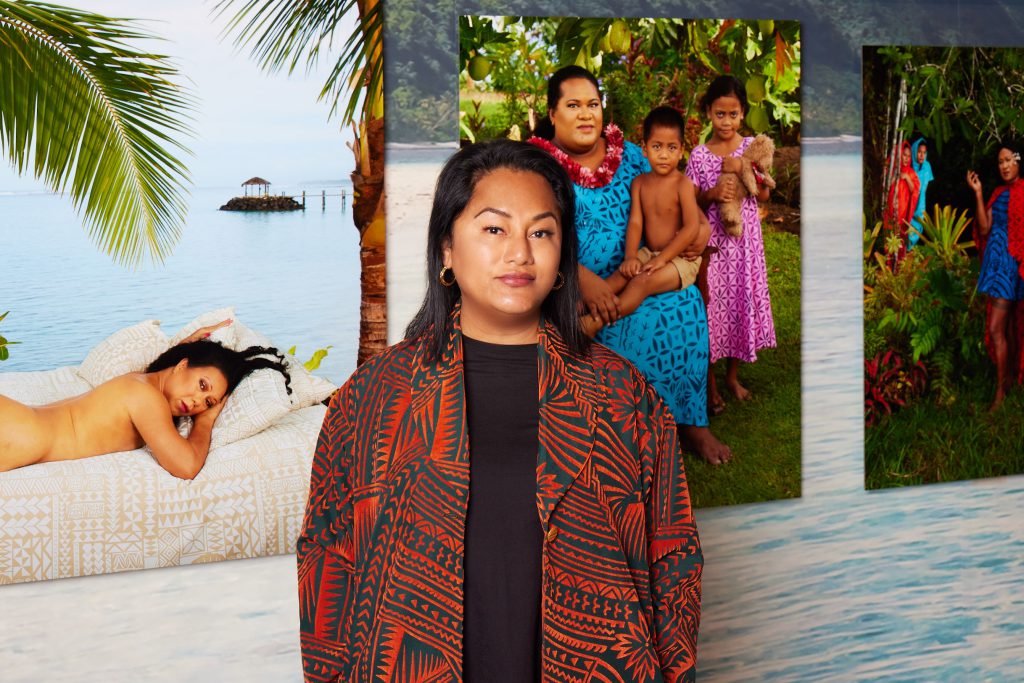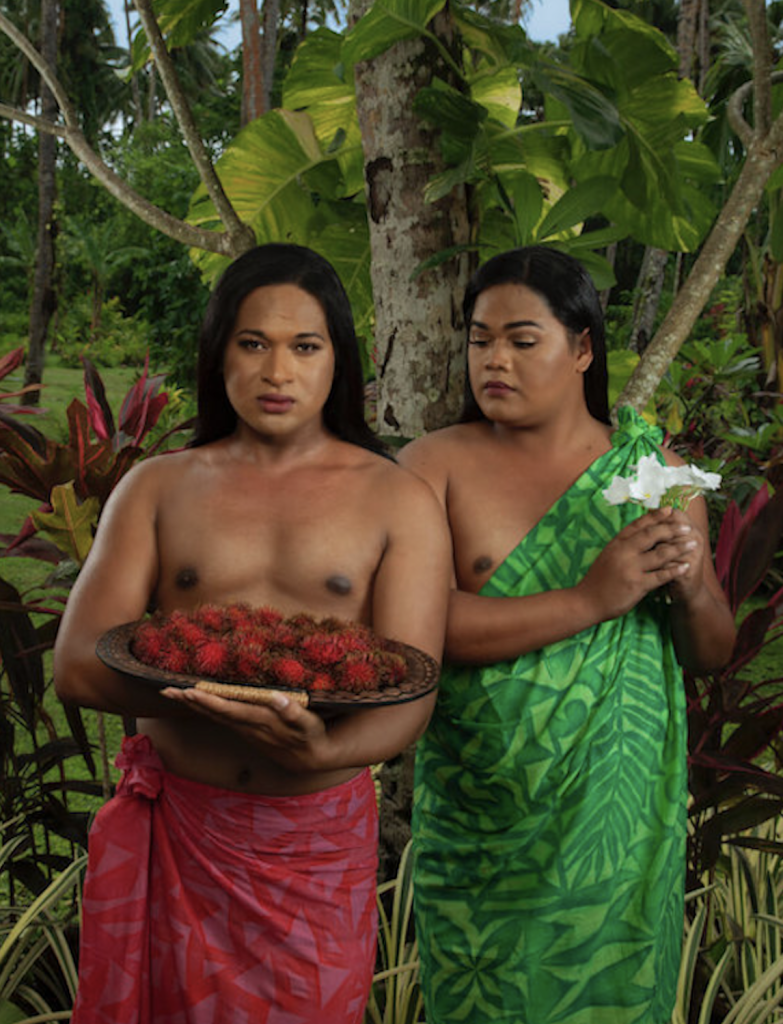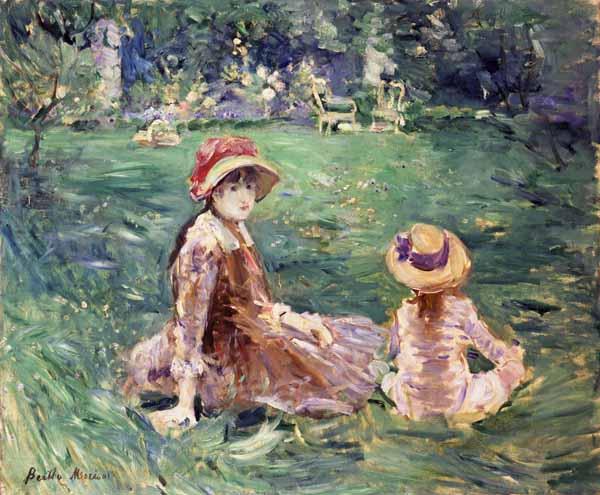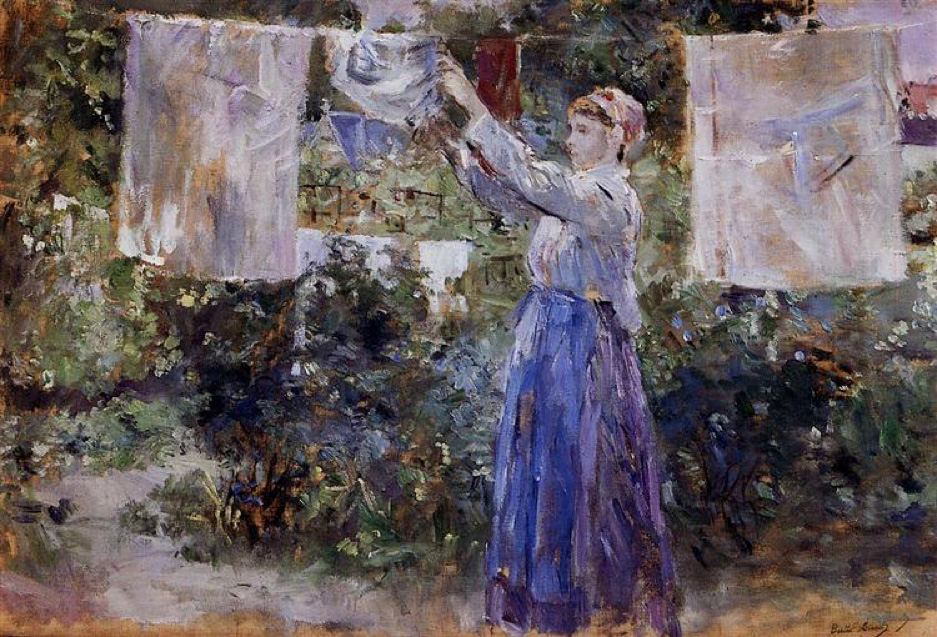Artist Yuki Kihara on Performing Paradise and Finding Sanctuaries
“Paradise Camp imagines Fa’afafine utopia that shatters colonial heteronormativity to make a way for an Indigenous worldview that is more inclusive and sensitive to the change in nature.”
– Yuki Kihara
Eight years in the making, the exhibition Paradise Camp by interdisciplinary artist Yuki Kihara explores colonial histories, intersecting gender issues, and ecological crisis with rigor, humor, and flair. Comprising 12 tableau photographs featuring a cast from Fa’afafine—Sāmoa’s traditional third gender—communities, Kihara’s work summons the late 19th-century French artist Paul Gauguin and his works from “French Polynesia,” which are believed to have been inspired by Sāmoa. Paradise Camp was just presented at the 59th International Venice Biennale, where Kihara became the first Fa’afafine and Pacific artist to represent New Zealand.
Before her artist talk on December 10 as part of the 2022–2023 Saturday University lecture series, Haley Ha, SAM Manager of Public Engagement at the Seattle Asian Art Museum, interviewed Kihara about the ideas and process behind Paradise Camp, the impacts of climate change in the global south, and the meanings embedded in her grandmother’s kimono.
HALEY HA: You were selected to represent the Aotearoa New Zealand Pavilion at the 59th Venice Biennale before the pandemic started. What was your vision for Paradise Camp when you started, and how did it change?
YUKI KIHARA: I was lucky to shoot the photographs for Paradise Camp in March 2020 in Sāmoa just before the global lockdown. Around mid-2020 there were numerous articles published in the global north that described Sāmoa and neighboring Pacific Islands being a “safe haven” from the COVID-19 pandemic, due to our geographical isolation during the global lockdown. Part of this perception is embedded in the Western legacy that continues to view the Pacific region as an untouched “Paradise” that masks ongoing colonial violence. The idea of the Pacific region as “Paradise” was heightened every time COVID-19 numbers were climbing at apocalyptic levels in the global north.
The global lockdown was in a way a blessing in disguise because it gave me a gift of time to work on post-production and the editing of the exhibition catalogue for Paradise Camp while being isolated.
HH: Can you tell us how the notions of “paradise” and “camp” came together? Covering the white walls of the New Zealand Pavilion with the oceanscape and extravagant tableau photographs, there seems to be a clear visual sensibility that you frame as “camp aesthetic.” Is there a story you want to tell with this exhibition?
YK: The origin of “Paradise” derives from the biblical story of Adam and Eve in the garden of Eden, which forms the foundation of how the West sees itself as being heteronormative where these ideas were imposed upon “others” through the process of colonialism. However, the idea of colonial heteronormativity is questioned by the research conducted by Sāmoan American artist and writer Dan Taulapapa McMullin, who found missionary accounts dating back to 1896 which described Sāmoa’s origin story of the formation of the first humans, who were a male couple; one is transformed by the gods into a woman. This story of gender transformation is something that resonates with how gender is understood in Sāmoan culture, which traditionally recognizes four genders.
HH: For this edition of the Saturday University series, we have delved into the ecological landscape of our time and its challenged built environment. You’ve shared in an interview about your experience of flood in Sāmoa and living through its rapidly changing landscape. How did these experiences shape your artistic practice?
YK: The Pacific region has become synonymous with images of unpolluted and vacant white sandy beaches that are constantly re-created by the tourism industry. They are also commonly featured on screensavers of millions of people around the world, becoming ironic and cliché in popular culture. However, those clichéd images of white sandy beaches are real places in Sāmoa with real people who’ve lived there for generations, faced with real life issues such as climate change, given that almost 80 per cent of Sāmoa’s population lives along the coastal areas. Scientific data shows that the global average for sea level rise is 2.8–3.5 millimeters a year, compared to Sāmoa’s sea level rise measuring up to 4 millimeters a year. In Paradise Camp, I wanted to juxtapose fact and fiction in order to drive home the reality of climate change from a Fa’afafine perspective.
HH: We’ve been navigating the extreme climate of our time and belatedly acknowledging the disproportionate impact of the ecological crisis on Indigenous peoples and marginalized communities. In your view, how does gender play a role in engaging with ecology and the environmental crisis?
YK: Climate change impacts all of us. 80% of the Sāmoa population lives alongside the coastal areas including Fa’afafine community. But it has a particular kind of impact on marginalized communities, particularly on the Fa’afafine community because there are things that impact us more than others. And this is what I wanted to highlight in Paradise Camp, to talk about Fa’afafine experience with climate change.
HH: Your Kimono series tells a tale of speculative fiction and imaginative histories, but also of our present and perhaps our near future. Can you tell us about this work and the サーモアのうた (Sāmoa no uta) A song about Sāmoa? How did you first conceive this idea and developed it?
YK: In 2015, I came across an old kimono owned by my late Japanese grandmother Masako Kihara where the color of the kimono reminded her of Siapo, a hand-made Sāmoan backcloth made from the Lau u’a (paper mulberry tree). This was the initial inspiration to bring together textile traditions from Sāmoa (tapa) & Japan (kimono) into a cross-cultural fusion to create a series of ‘siapo kimono’ where kimono made from Samoan tapa cloth are presented as sculpture. The title of the series is adapted from a popular Japanese song entitled ‘Samoatou no uta’ in Japanese meaning ‘A song from Samoa.’ Music textbooks for elementary school students in Japan feature the song. The work aims to reframe the Vā [relation] between Japan and the Pacific and specifically Sāmoa, taking an Indigenous interpretation of trans-Pacific identity, gender, and history, while referencing my own interracial Sāmoan & Japanese heritage as a point of conceptual departure.
– Haley Ha, SAM Manager of Public Engagement at the Seattle Asian Art Museum
Images: Two Fa‘afafine (After Gauguin) from Paradise Camp series, 2020, Yuki Kihara. Courtesy of Yuki Kihara and Milford Galleries, Aotearoa New Zealand. Artist Yuki Kihara at her Paradise Camp exhibition presented at the 59th Venice Biennale, 2022. Courtesy of Yuki Kihara and Milford Galleries, Aotearoa New Zealand. Photo by Lukas Walker, 2022. Two Fa‘afafine (After Gauguin) from Paradise Camp series, 2020, Yuki Kihara. Courtesy of Yuki Kihara and Milford Galleries, Aotearoa New Zealand. Genesis 9:16 (After Gauguin) from Paradise Camp series, 2020, Yuki Kihara. Courtesy of Yuki Kihara and Milford Galleries, Aotearoa New Zealand. Installation view of ‘サ–モアのうた (Sāmoa no uta) A song about Sāmoa’ Phase 2: Fanua (Land),2021, Yuki Kihara, presented at the Aichi Triennale, Japan in 2022. Photo by Ayako Takemoto.
